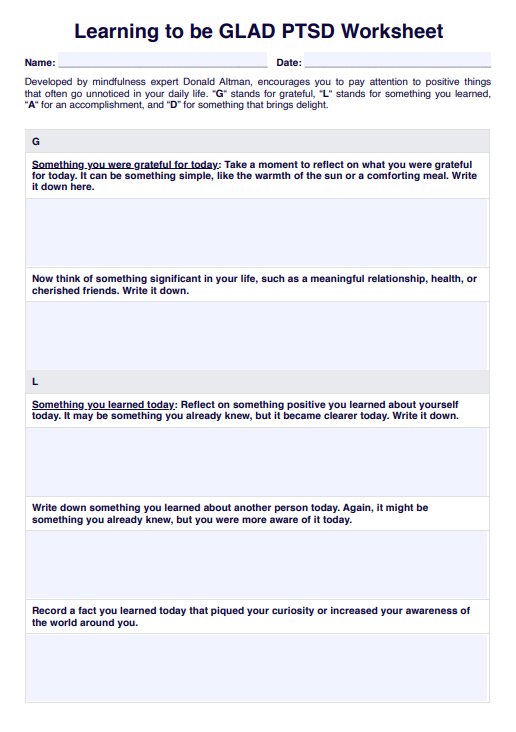The time to finish the worksheet varies, but it typically takes 10-15 minutes. It can be done daily or weekly, depending on individual preferences.

Learning to Be GLAD PTSD Worksheet
Want to explore gratitude and positivity in your journey towards recovery? Use and download the Learning to Be GLAD PTSD Worksheet today!
Use Template
Learning to Be GLAD PTSD Worksheet Template
Commonly asked questions
This worksheet promotes gratitude and positivity, aiding in counteracting trauma's adverse effects. Regular use can improve emotional well-being and resilience in those with PTSD.
This worksheet is best used as a daily reflection tool, often in the evening. It complements therapy, enhances positivity, or whenever a mood boost is needed.
EHR and practice management software
Get started for free
*No credit card required
Free
$0/usd
Unlimited clients
Telehealth
1GB of storage
Client portal text
Automated billing and online payments











